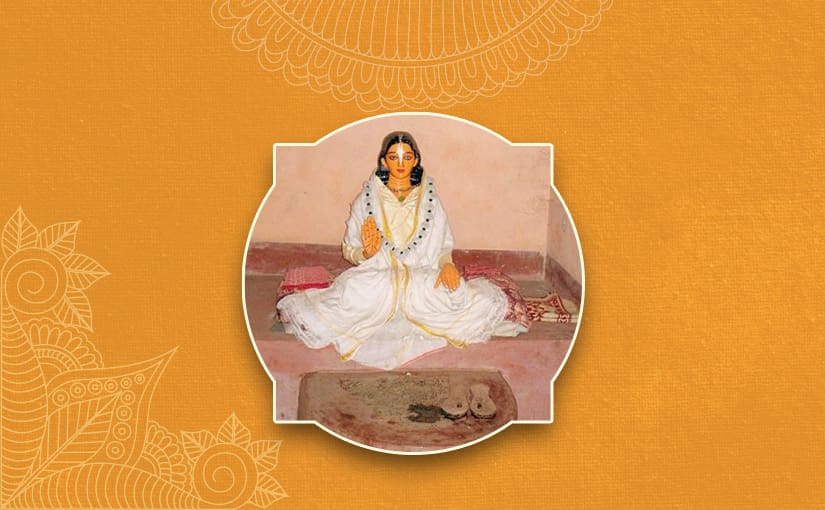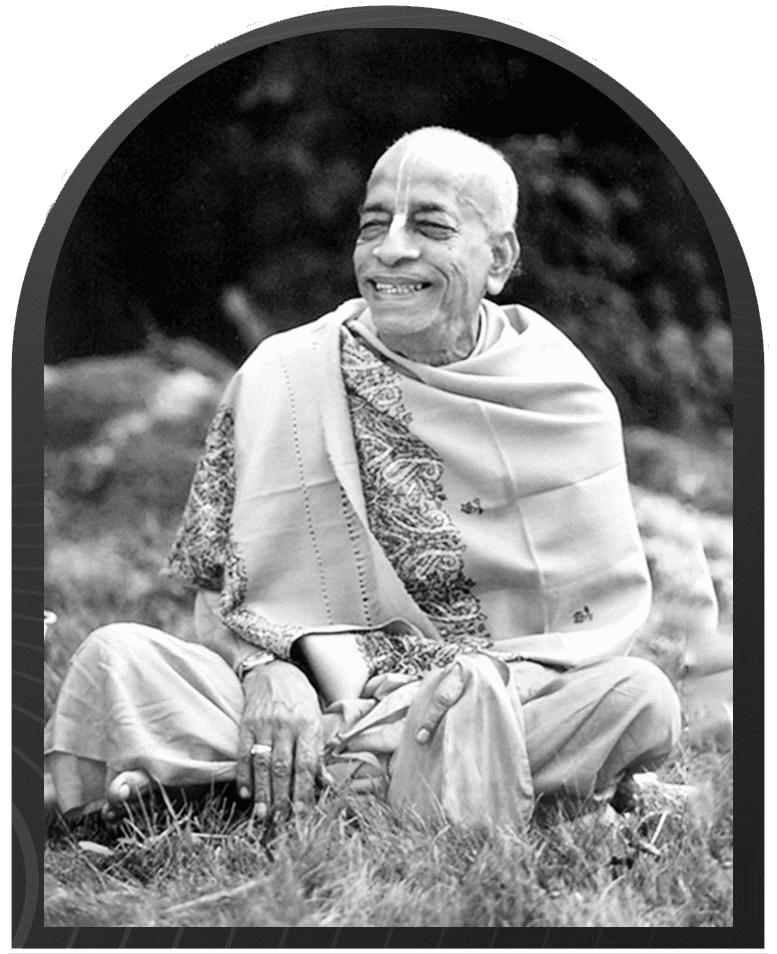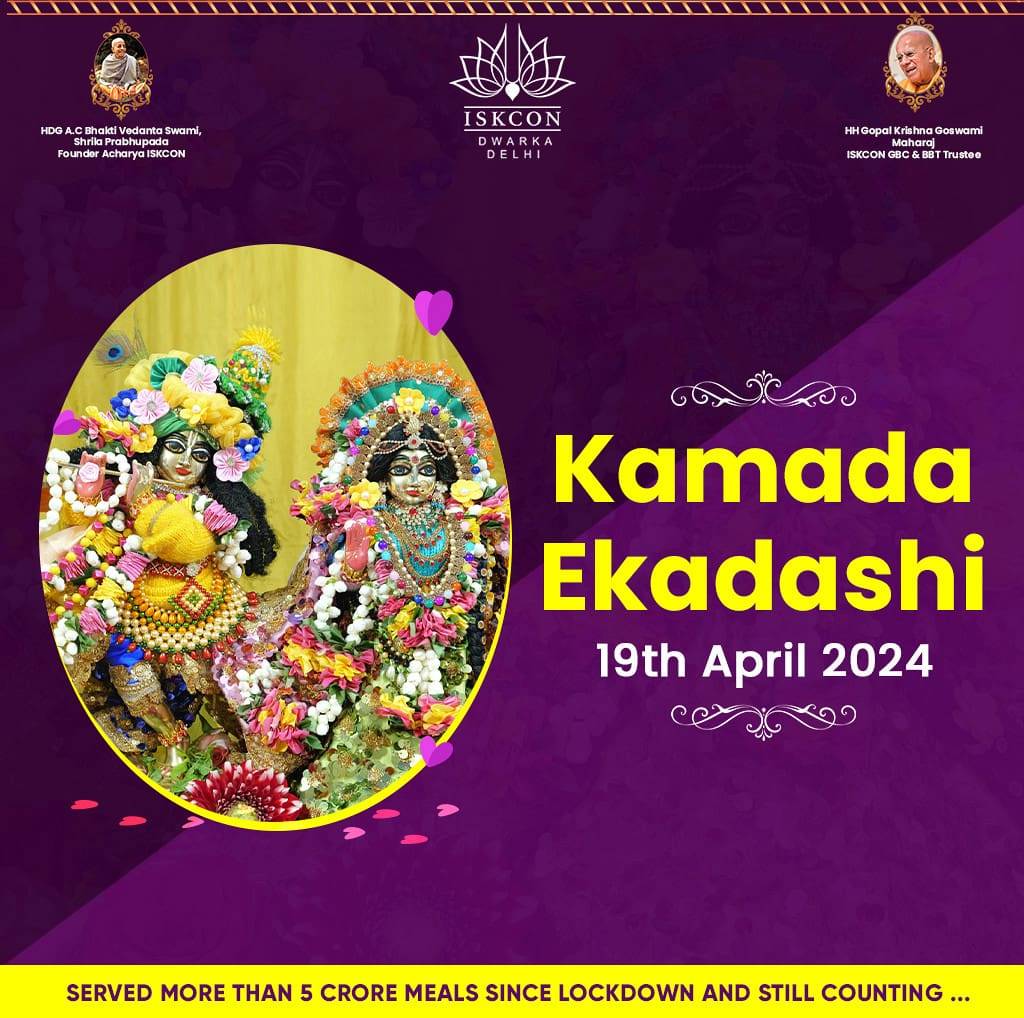The Life and Teachings of Srinivas Acharya
Chaitanya Dasa and his pregnant wife visited Lord Chaitanya in Jagannatha Puri after witnessing Lord Gauranga’s sannyasa ritual in Katva. “Your wife will soon give birth to a son named ‘Shrinivasa,’ stated Lord Chaitanya, “and all the bhakti shastras of Rupa and Sanatana will be given through Shrinivasa.” Let’s understand the importance of Shri Srinivas Acharya in Vaishnava history.
Shrinivasa visited Lord Gauranga’s remaining allies at Katva, Navadwipa, and Jagannatha Puri after his father died. They blessed Shrinivasa and provided him with excellent spiritual guidance. When they saw his absorption in Gauranga prema, they realized he was “an embodiment of Gaura-shakti, the energy of Shri Gauranga Mahaprabhu.”
He arrived in Vrindavana, visited the twelve forests, and received diksha from Gopala Bhatta Goswami. Shri Jiva Goswami taught him the entire Gaudiya Vaishnavism ideology. Shri Jiva bestowed the title “Acharya” on Shrinivasa in recognition of his enormous knowledge.
His Role in the Gaudiya Vaishnava Sampradaya
In the development of the Gaudiya tradition, the initiation of the king and his devoted subjects was a significant occasion. Soon, Vishnupura rose to prominence as a major Vaishnavist center. Only at Vana Vishnupura did Gaudiya Vaishnava culture and art in all of India evolve independently from outside or distracting influences. Even the Muslim influx was negligible. Therefore, the Vaishnava monuments of Vishnupura are the only places where Bengal’s architectural and sculptural art from the early seventeenth century onwards can be found in profusion and pristine form.
From 1596 to 1622, King Virhamvir ruled. He composed songs honoring Shri Srinivasa Acharya, Lord Chaitanya Mahaprabhu, and Lord Krishna. Pada-kalpataru and Bhakti-ratnakara include his poetry. The king’s literary works, which reflect his lovely voice, aided in evangelizing Vaishnavism throughout his realm.
Thus, Srinivasa completed his task in Vishnupura. Not only had the books been found, but the major bandit had converted to Gaudiya Vaishnavism; he wrote to Jiva Gosvami. The entire city of Vrindavana rejoiced and sang praises for Srinivasa Acharya. Now that the kingdom of King Virhamvir had been converted to Vaishnavism, Srinivasa was establishing a significant center there.
Srinivas Acharya’s Contributions to Bhakti Literature
Shrinvasa and his two friends, Shyamananda Prabhu and Narottama Dasa Thakura, pioneered the first transcendental book distribution celebration after accepting Shri Jiva’s command. Jai Vrajabasi Sankirtana Party! They transported the Goswami’s spiritual writings from Vrindavana on a bullock cart and distributed them throughout Bengal and Orissa.
Shrinivasa Acharya initiated many followers (Ramachandra Kaviraja and others), composed bhakti-filled songs (Sad Goswami-ashtakam), and pioneered a unique kirtana technique. He occasionally lost his voice from chanting for so long when leading kirtana.
The Significance of the Six Goswamis’ Mission
The king’s dacoits had closely followed the vehicle. The king’s astrologers had claimed that this wagon contained a valuable treasure, which made it very intriguing. The dacoits had been pursuing the cart for some distance, but they decided it would be best to wait until it arrived in their realm.
Only fifteen men; ten armed soldiers, two cartmen, and three holy men—were visible to the bandits escorting the cart. The more than 200-member band of thieves roused one another’s fantasies by saying, “This cart is filled with jewels more valuable than gold.” They came close to overtaking the party in the Tamar village, but the situation prevented it. Through the towns of Raghunathapura and Pancavati, they pursued the group.
The group finally spent the night by a lovely lake at Gopalapura. The fifteen soldiers all slept soundly after their long trek. When they awoke, they discovered that their worst fear had come true: the manuscripts had been taken.
Srinivasa instructed Narottama and Syamananda to travel to Bengal and Orissa with the teachings of the six Gosvamis. He would like to get the documents on his own. He detailed all that had occurred in a letter to Jiva Gosvami.
Srinivas Acharya’s Association with Lord Nityananda
When Srinivasa arrived at Nityananda Prabhu’s residence in Khardaha, Jahnava Devi, her son Birabhadra, and other family members welcomed him as if he were a member of their own. However, Jahnava Devi advised him to leave immediately for Vrindavana because Rupa and Santana would soon reunite with the Lord in the spiritual world.
Srinivasa sent a letter from Jahnava Devi to the well-known Abhirama Thakura in Khanakul Krishnanagar before continuing to Vrindavana. Three loving lashes from an amazing whip administered by the Thakura as a welcome to him were a blessing. Anybody touched by the whip, known as Jai Mangala, would feel the love of God. Sri Abhirama and his wife, Malini, showed Srinivasa a great deal of love. In addition to giving him their renowned whip as a blessing, they also gave him helpful advice and emphasized the significance of visiting Vrindavana as soon as possible.
Srinivasa made a stay in Katwa before continuing his journey after his father had witnessed Lord Chaitanya Mahaprabhu take the renounced order: He then traveled to Ekacakra, the birthplace of Nityananda Prabhu, passing through Agradvipa, the location of the temple built by the three illustrious Ghosh brothers, Vasudeva, Govinda, and Madhava. Srinivasa eventually made one more trip to Jajigram to bid goodbye to his ailing mother and to see his cherished master, Narahari Sarakara. Srinivasa was asked to leave right away by Narahari, who was worried about his delay in departing for Vrindavana.
As a result, Srinivasa left for Vraja right away. He had become an adult by this point.
Celebrating the Glories of Srinivas Acharya
Shrinivasa Acharya practiced intensive raganuga bhajana in addition to his preaching and writing. Raganuga bhajana is Radha and Krishna’s spontaneous internal devotion based on the mood and sentiments of the eternal dwellers of Shri Vrindavana dhama, such as the gopis. When performing manasi seva (service to Radha-Krishna within one’s mind in a mentally conceived spiritual form), he would frequently return to external consciousness with tangible paraphernalia from these meditations. Lord Gauranga was formerly seated on a jeweled throne within Shrinivasa’s consciousness. Then he worshipped the Lord with a five-flower garland and a golden-handled chamara whisk. Gaura Raya, pleased with his duty, returned the garland to Shrinivasa, who immediately awoke and lost his meditation. When Shrinivasa regained consciousness, he discovered the sweetest flower garland he had ever smelled hanging around his neck.
Shrinivasa was in his siddha svarupa as Mani-Manjari another time, observing Shrimati Radharani, Lord Krishna, and the gopis engage in Holi Lila joyfully tossing colored powders and dyes on each other. The gopis instructed Mani-Manjari to provide Radhika with colors and to join them in their “war” against Shyama. Their ferocious struggle rocked the earth. Shrinivasa’s meditation came to an abrupt halt. His body was entirely covered with fragrant and unique rainbow-colored powders imported from the spiritual realm, head to toe. Happy Holi, lila ki jai! Shrinivasa Acharya’s samadhi is located near the Dhira Samira samadhis.
Conclusion
For more such tales of Shri Srinivas Acharya, keep supporting the blogs by ISKCON temple. Keep chanting the Krishna mantra “Hare Krishna Hare Krishna Krishna Krishna Hare Hare
Hare Rama Hare Rama Rama Rama Hare Hare.”





